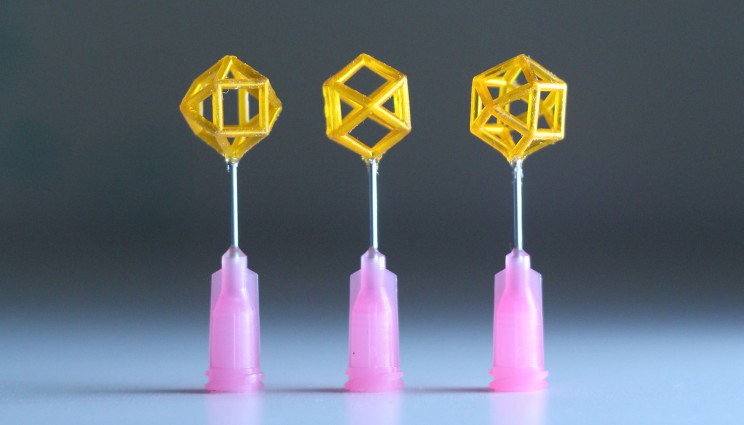One of the most fascinating innovations achieved with 3D printing is naked to the human eye. That’s because it involves changing the physical properties of an object through changes in its microarchitecture. By 3D printing unique microgeometries, one can make a material behave in completely novel ways. The resulting architected materials, also referred to as metamaterials, have a number of interesting applications across a variety of industries.
Architected Materials
Those who use desktop extrusion printers actually print architected materials most of the time they use them. The infill setting in a print software allows users to choose specific geometries that reduce the weight of the print, while maintaining structural integrity. The infill can be made denser with different-shaped patterns in order to modify the strength-to-weight ratio of the design.
Purdue researchers have developed a new design method that will enable anyone to quickly design and fabricate soft robots using a 3D printer.
As it stands, most infill options for desktop printing are pretty limited. The honeycomb shape is the most popular and the exact amount of infill can be chosen from zero (hollow) to 100 percent (fully dense). What’s lacking is the ability to both modify the shape throughout (e.g., move from honeycomb to triangle where appropriate) and the size of the shape throughout (large in places, small in others based on the best circle-packing strategy).
This author is not aware of any available software that can yet perform this sort of infill optimization for desktop 3D printing, but it is something that is being developed in labs and for commercial use. While some of these endeavors look at desktop printing methods specifically, others go beyond to explore metal additive manufacturing (AM), microscopic printing systems and more. Lawrence Livermore National Laboratory (LLNL) is a pioneer in the space and has used its microstereolithography technology to 3D print objects that can bear 10,000 times their own weight.
Capabilities
Though the most obvious application discussed so far for the design and printing of architected materials is improving the strength-to-weight ratio of an object, researchers have explored a number of different physical properties possible with architected materials. This includes the following list below:
- Compression/cushioning: Autodesk and LLNL were among the most notable to design an architected material for use in helmet cushioning. By optimizing the microgeometry of a 3D-printed cushion, the team could selectively make regions of a cushion softer and more prone to compression and other regions stiffer.
- 4D behavior: Referred to as 4D printing, some 3D-printed objects can be designed such that it behaves differently when exposed to the environment. An example that may be easiest to intuitively understand is the printing of an object that prints flat onto the printbed but folds automatically when removed and compressive forces are taken away. Other, more complex examples involve printing with materials that change when exposed to heat or water.
- Soft robotics: Perhaps a subcategory of 4D printing, 3D-printed soft robots are robots that move without the use of on-board electronics. These objects tend to feature a structure that, when exposed to the environment, causes them to behave in a certain way. Purdue University researchers, for example, used a Form 2 3D printer to create robots that, when compressed, cause limbs on a quadruped robot to twist and bend such that the robot moves forward.
- Self-healing: May also be considered a type of 4D printing, depending on who you ask. Using a specialty developed photopolymer, researchers at USC were able to print objects that, when cut in half, could rejoin disparate parts upon exposure to 40 to 60°C (104 to 140°F) temperatures.
- Shape-shifting: Also related to 4D printing and soft robotics is the idea of 3D printing objects whose shapes can be modified after fabrication. A team at Harvard has developed a framework for designs that can be folded and reconfigured to change shape once constructed. In some cases, these structures change shape through hand-manipulation (inspired by origami designs). In others, pneumatic hoses are used to push air to soft, 3D-printed robots to drive their shape-shifting. So far, their work has been deployed mostly for macroscale structure, where designs are easier to manipulate and explore, but the principles underlying the work can also be applied to microstructures.
In this series on architected materials, we will explore some of these possibilities, the varieties of 3D printing technologies used, and some of the outcomes of this research.
